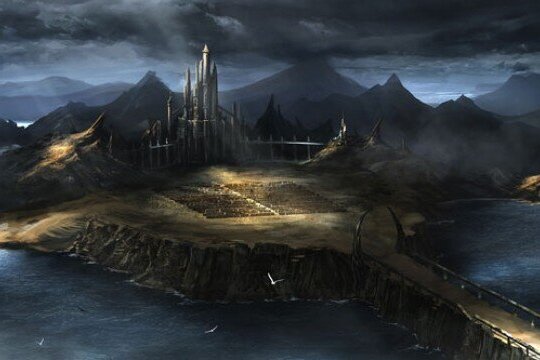The logarithmic scale feels a bit broken at level 1.
100 square feet is a 10' x 10' space, which is on the scale of the smallest bedrooms (9' x 9'), or a large tent (roughly the same size). I suppose it could qualify as a "hut", but I don't know that I could imagine a workshop for any sort of task to be usable at that size. It's certainly too small to be considered defendable in any sort of way (as one might expect from a category called "stronghold").
I can think of lots of variations for the level 2 stronghold (townhouse, shop), using 500 sq ft to 1000 sq ft. As it scales down to 100 sq ft, though, it approaches the above problems.
Basically, I'd consider 400 sq ft to be a useful size for level 1, and a reasonable bottom end for level 2. 100 sq ft is too small to even be worth putting on this scale, as it's barely different than living in the streets, or sleeping under a lean-to in the woods.
As levels increase, I also am left wondering about the distinction between building size and land size. A house on a 1 acre plot of land (43,560 sq ft) is not an unusual purchase for those who want some pseudo-farming space (raising chickens or goats, or wanting a large vegetable garden, etc), though the house itself would be a typical size (1500 sq ft to 2000 sq ft). Would the stronghold category be based on the building size (level 3) or the land size (level 4)? Based on the examples, I'm assuming building size.
At the same time, I'd assume that outbuildings would be included (for example, a cathedral would not be
just the cathedral building, but the associated living quarters, libraries, kitchens, etc, that are all collectively part of the cathedral complex as a whole).
That then leads to considerations of, say, a fortress. A fortress is not really defined as a single building, but rather as an enclosed, protected area. The walls define the boundary of the fortress, rather than the building. Walls a quarter mile on a side would be well into the 1,000,000+ sq ft range, but a building a quarter mile on each side is just ludicrous to consider. (For scale, a quarter mile is 1320 feet; the Empire State Building is 1250 feet tall, or 1454 feet when you include the spire.)
Notes: A mansion is generally considered to have a minimum of 5000 sq ft, often at least 8000 sq ft. Keeps generally topped out at 10,000 sq feet. A 'typical' castle might cover 3 acres (130,680 sq ft), while the largest might scale up to 140 million sq ft (though that's more in the category of 'fortress', as it includes a large amount of the surrounding land). That leaves a scale gap that's a bit fuzzy, though.
If I were to try to build a scale based on "usefulness tiers", rather than just x10 for each tier, I'd probably look at something like:
| Tier | Size | Example |
| 1 | Up to 400 sq feet | Small living area (1-3 rooms), Workshop |
| 2 | Up to 1200 sq feet | Modest living area (eg: townhouse), Small Shop |
| 3 | Up to 5000 sq feet | Large living area (eg: farmhouse), Large shop (eg: tavern), Temple, Tower |
| 4 | Up to 20,000 sq feet | Mansion, Keep |
| 5 | Up to 75,000 sq feet | Mansion or Keep with bailey and walls |
| 6 | Up to 250,000 sq feet | Castle, Cathedral |
| 7 | Up to 1,000,000 sq feet | Palace, Fortress |
| 8 | 1,000,000+ sq feet | Fortified Lands |
Where tiers 1-7 largely just cover actual buildings, tier 8 includes any arbitrary amount of land that is also walled-in and defended. Tier 5 is a fuzzy area, where I think it would be useful to include a walled defense line with bailey and such, as an intermediate stage between an unguarded mansion and a full-on castle.
This doesn't give a simple x10 metric-like scaling on size (it's closer to x4 at each step), but instead scales on building type, which I think is easier to visualize, and provides a better granularity.
Edit: Didn't intend to post yet. Working on details.
Edit2: Updated.

 www.levelup5e.com
www.levelup5e.com






